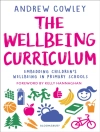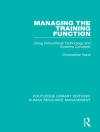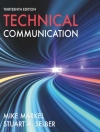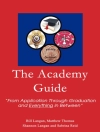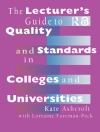This timely resource provides a framework for teaching students how to think qualitatively and become more critical and reflexive researchers. Presented are a wealth of pedagogical tools that instructors across the disciplines can tailor to their own needs, including thought-provoking discussion questions, group work exercises, and field activities. The authors discuss issues and choices in course design, including approaches to assessment and grading, and share sample syllabi for both online and face-to-face course formats. Exploring the complexities and debates that surround teaching qualitative research, the book argues for a holistic model of preparing novice researchers. It demonstrates effective ways to engage students in the qualitative inquiry process from start to finish–from understanding positionality and crafting a research problem to writing up findings for different audiences.
表中的内容
1. What Does It Mean to Teach Qualitative Research?
– Why Is It Imperative That We Build a Pedagogical Culture Around Preparing the Next Generation of Qualitative Researchers?
– What Does It Mean to “Teach” Qualitative Research?
– Introduction to the Debates, Discourses, and Complexities Inherent in Teaching Research
– Different Fields and the Issues in Common for Teaching Qualitative Research
– Institutional Arrangements and Politics
– Chapter Summary
2. So You’ve Been Asked to Teach a Qualitative Research Course: Socialization and the Qualitative Researcher
– Course Design Principles, Processes, and Taxonomies
– Design Principles of Courses and Understanding the Learner
– Approaches to Teaching Qualitative Research
– Should Qualitative Research Be Taught within Single Disciplines or Should a Cross-Disciplinary Approach Be Advocated?
– Why Teach Critically? What Other Approaches Are Possible?
– General Course Design Principles
– Knowing the Learner: Countering and Working with the Resistant Learner
– Inviting Students into a Community of Learning
– Reflection or Reflective Practices
FACULTY REFLECTIVE JOURNAL EXERCISE 2.1. Prior to Teaching the Course
FACULTY REFLECTIVE JOURNAL EXERCISE 2.2. Planning to Teach
FACULTY REFLECTIVE JOURNAL EXERCISE 2.3. Thinking about Teaching
– Chapter Summary
Sample Syllabi Templates (Face-to-Face, Workshop and Studio Based, Online)
EXAMPLE 1. Some elements included in a syllabus for a face to- face, theory-driven approach to an introduction to qualitative inquiry
EXAMPLE 2. Some elements included in a syllabus using workshop and studio pedagogies for a face-to-face graduate seminar on ethnography and education
EXAMPLE 3. Some elements included in a syllabus for an online introduction to a qualitative inquiry course
3. It’s Never Too Early to Start “Thinking Qualitatively
– Using a Holistic Approach to Thinking Pedagogically about Teaching Qualitative Research
– What Is a Holistic Pedagogy? And Why Is It Needed?
– Key Characteristics of Holistic Pedagogy for Teaching Qualitative Research
– What Does It Mean to Think Qualitatively?
– Teaching Qualitative Thinking through Experiential Learning
CLASSROOM EXERCISE 3.1. Grocery Store
CLASSROOM EXERCISE 3.2. The Outsider
– Teaching Qualitative Thinking through Dialogue
CLASSROOM EXERCISE 3.3. 20 Questions
– Facilitating Students to Ask Qualitative Questions
– Example of Qualitative Thinking Leading to Research from Sidewalk
– Example of Qualitative Thinking Leading to Research from Bad Boys
– Reflexive Thinking for Qualitative Research Topics
CLASSROOM EXERCISE 3.4. Brainstorming Qualitative Research Topics
– How to Ask a Qualitative Research Question
CLASSROOM EXERCISE 3.5. Research Topic and I (Eye)
– Chapter Summary
4. What Do You Mean That Being “Biased” Isn’t Wrong?: Reflexive Exercises to Promote Awareness and Discussion of “Positionality” in Qualitative Research
– Discussing and Tackling the Questions of Bias
– What Is Bias in Critical Qualitative Research?
– What Is Positionality and How Does It Influence Qualitative Research Projects?
– Hierarchical Positionings and the “Other” in Qualitative Research
– The Role of the Qualitative Researcher
– Ethical Considerations
– Outsider, Insider, Friend, Peer, Companion
CLASSROOM EXERCISE 4.1. Teaching Reflexivity
– Identity and the Qualitative Researcher
CLASSROOM EXERCISE 4.2. Understanding Your Positionality
– Chapter Summary
5. Crafting a Research Problem: The “So What?” Question
– The “So What?” Question
– Students’ Responses to Research Methods Courses
CLASSROOM EXERCISE 5.1. Opening a Conversation
CLASSROOM EXERCISE 5.2. Examining Assumptions
CLASSROOM EXERCISE 5.3. Examining Assumptions through Autobiographical Writing
– What Is a Research Problem in Qualitative Research?
– Distinguishing between Researchable Problems and Practical Problems
– What Makes a Problem Researchable?
CLASSROOM EXERCISE 5.4. Linking Qualitative Questions and Research Purpose
– Advocacy Research
– Identity Work and the Research Question
CLASSROOM EXERCISE 5.5. Imagining Researcher Roles and Identity
– Asking the “So What?” Question
– Identifying the “So What?” Question, or the Gap in Published Studies
CLASSROOM EXERCISE 5.6. Learning to Locate Researchable Problems
– Chapter Summary
6. Teaching Students to Write a Review of Literature: A Roadmap, a Conversation, and Metaphorical Imaginations
– What Are the Students’ Assumptions of Literature Reviews?
– How to Build an Argument in a Review of Literature
– An Advocate Approach
– A Jury Approach
– Types of Literature Reviews
– Descriptions and Discussion: Thematic, Scoping, and Critical
– Functions of a Literature Review
– Students’ Experiences of Crafting Literature Reviews
– Tools for Approaching a Literature Review
– Using Tables in Literature Reviews
– Methodological Transparency and Metaphorical Imaginations
CLASSROOM EXERCISE 6.1. Analogies and Reviews of Literature
– Prepare to Search
– Pedagogical Devices for Teaching Novice Researchers about Literature Reviews
– Critical Reading and Writing: Learning the Vocabulary of Research
CLASSROOM EXERCISE 6.2. Analyzing Literature Reviews
CLASSROOM EXERCISE 6.3. Library Excursion
– Rubric for Reviews of Literature
CLASSROOM EXERCISE 6.4. How or When to Use Citations and References
– Chapter Summary
7. Participant Observations, Research Questions, and Interview Questions: The Art of Observing and Questioning Self and Others in the Research Process
– The Art and Craft of Observation
CLASSROOM EXERCISE 7.1. Role Play
– Helping Students Think through the Focus of Observations
– Teaching Ideas for Learning to Observe and to Write Field Notes
– The Art and Craft of Interviewing
– Starting the Conversation: What Are Good Interviews?
– Research Questions and Their Links to Interview Questions
– Preparing Interview Protocols: Things to Think About
CLASSROOM EXERCISE 7.2. Learning to Formulate Interview Questions
– Practicing Interviewing with Peers
– Teaching Listening for Developing Interview Skills
CLASSROOM EXERCISE 7.3. Brainstorming What It Means to Listen
– Modes of Interviewing: Distance versus Proximity
– Phone Interviews
– Focus Group Discussions and Group Interviews
– Narrative Interviews and Life History Interviews
– Recruitment of Participants
– The Emotional Work of Interviewing
– Postinterview Reflections: Voice Memos as a Way to Reflect on Interviews
– Reflecting on the Content of the Interview
– Reflecting on the Process
– Lessons Learned
– Activities for Teaching Interviewing Skills
CLASSROOM EXERCISE 7.4. The Art and Craft of Interviews
CLASSROOM EXERCISE 7.5. Interview Modes
– Chapter Summary
8. Teaching Emergent Methods of Data Collection
– Teaching Emergent Methods of Data Collection
– Why Emergent Methods?
– What Are Multimodal Data?
CLASSROOM EXERCISE 8.1. Brainstorming Interesting Phenomena for Qualitative Research Data Gathering
– Teaching Visual Literacy
CLASSROOM EXERCISE 8.2. Keeping a Visual Diary
– Multiple Forms of Data Gathering
– Visual Methods
– Photographs and Visual Data for Empowerment
– Photovoice Methods for Interviewing
WORKSHOP: PHENOMENOLOGICAL ETHNOGRAPHY. Using Photos and Other
Artifacts to Explore a Cultural Phenomenon
– Performance- and Arts-Based Data
– Issues, Ethics, and Best Practices for Image-Based Research
– Data Gathering Online
CLASSROOM EXERCISE 8.3. Data Gathering Online
– Chapter Summary
9. Teaching Creative Analytic Practices
– Teaching Creative Analytic Practices
– Data Analysis
– Teaching Organization: Dealing with Piles and Files
– Data Management Plans: Developing Systems to Manage the Data
– Data Expansion
– Data Reduction
– Goals of Analysis
– Practical Tips for Handling Data for Coding
– Teaching Students Where Codes and Themes Come From
– Teaching Analysis as a Collective Classroom Activity
CLASSROOM EXERCISE 9.1. Trying Out Data Analysis in a Large Group
– Questions as a Way to Teach Data Analysis
– Who, What, Where, When, Why, and How?
– Reflective Questions That Interrogate Data
– Questions for Peer Review
CLASSROOM EXERCISE 9.2. Peer Feedback in Data Analysis
– Qualitative Analysis Strategies
– Teaching Analysis through Visual Displays
CLASSROOM EXERCISE 9.3. Creating Visual Displays and Visual Memos
– Teaching Interpretation
– Use of Metaphor to Teach Qualitative Analysis
CLASSROOM EXERCISE 9.4. Looking for Metaphors and Analogies
– Using Theory as a Building Block for Analysis
– Chapter Summary
10. Writing Qualitative Research Reports and Articles
– Writing Doctoral Dissertations, Master’s Theses, and Refereed Journal Articles
– Teaching about the Different Sections through Examples
– Low-Stakes Writing—or Practice Writing as a Pedagogical Strategy
– “Workshopping” as a Method to Teach Writing Qualitative Research
– Creating Peer Circles for Workshopping Writing
– Writing Findings in Qualitative Research
– Making Claims from Data
– Making Meaning from Data
– Telling the Lesser Stories through Summaries
– Using Pseudonyms or Composites for People and Places in Qualitative Research Findings
– Writing the Discussion Chapter
– Acknowledge Limitations and Delimitations
– Writing Articles during and after the Dissertation
– Writing for Journals and Conferences
– What Is Quality in Qualitative Research?
CLASSROOM EXERCISE 10.1. A Dialogue on Quality
CLASSROOM EXERCISE 10.2. Presenting the Study in a Conference Format
– Chapter Summary
– Conclusion: Final Thoughts
References
Index
About the Authors
关于作者
Raji Swaminathan, Ph D, is Associate Professor in the Department of Educational Policy and Community Studies in the School of Education at the University of Wisconsin–Milwaukee. She has served as Director of Doctoral Studies and Chair of the Department and is a recipient of the university’s Faculty Teaching Award. Dr. Swaminathan has authored or edited three previous books, two on qualitative research methods and one on the narratives of immigrant women. She is interested in and works in the areas of qualitative research, youth resilience, urban and alternative schools, creative pedagogies, and school leadership within qualitative research.
Thalia M. Mulvihill, Ph D, is Professor of Higher Education and Social Foundations and Acting Assistant Provost at Ball State University. She has served as Director of two doctoral programs, as well as Director of the Certificate Program in Qualitative Research and Education and the Certificate Program in College and University Teaching. Dr. Mulvihill is coeditor of
The Teacher Educator and author or editor of four previous books related to qualitative research and innovative pedagogies. A recipient of numerous teaching, research, and mentoring awards, she is engaged in the study of historical and sociological issues in the field of higher education, innovative pedagogies, educational leadership, and qualitative inquiry.


